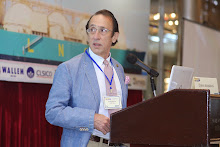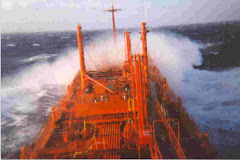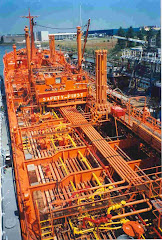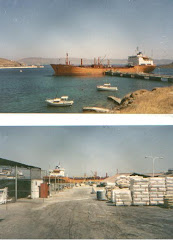IMO 2020 is a daunting challenge for the shipping industry. After initially a long period of ‘wait and see’ with considerable verbal resistance to retrofitting their ships with scrubbers, there is a sudden rush since June this year of companies jumping on the bandwagon to retrofit their fleet with scrubbers. Whether over time this proves an effective means to meet the environmental challenges ahead for the industry remains to be seen. It is likewise questionable in terms of the interests of the shipping industry as a whole.
The IMO 2020 regulation places an impossible burden on the shipping industry. Normally environmental regulations on matters like exhaust emissions start with the engine makers and refining industry, not with the end users of the equipment.
Here the shipping industry will be monitored and fined for exhaust emissions from not using compliant low sulfur fuel oil (LSFO). The existing fleet is equipped with engines designed to burn heavy sulfur fuel oil (HSFO). It not clear that the refining industry will be able to supply sufficient LSFO. The refinery industry is not mandated to do this under IMO 2020. They do not know themselves how much HSFO will continue to be used and how much LSFO will be needed. Changing the refinery cycle to produce LSFO requires investment. Also possibly this will necessitate change of supply chain for crude oil in favor of lighter crude grades more amenable for production of LSFO.
None of the means of compliance for ship owners is guaranteed to be without risks, expenses and issues.
- Scrubbers are an exception in the IMO 2020 legislation that allow ship owners to continue to burn HSFO in their engines. No one knows for how long the regulatory authorities will continue to permit this exception. The technology is based on land applications in heavy industries like power plants. Scrubbers are heavy and expensive equipment. The residues from the process have a disposal issue. The process requires additional energy and has maintenance costs. Fitting scrubbers is a costly capital investment in the millions of dollars per vessel as well as requiring off-hire and expenses for installation. The CAPEX may be recovered in the operation of the vessel with cheaper HSFO but no one yet knows how much the price differentials will be between HSFO and LSFO and how long or soon will be the payback. The growing sentiment for scrubbers at least for larger tonnage comes from fear of being left out with charterers, who will give preference to vessels that can burn the cheaper HSFO. Some major oil company charterers are offering period charters at substantial premium to current T/C rates for vessels fitted with scrubbers.
- Burning compliant LSFO will have considerably higher costs than previously with the HSFO. Nobody knows whether there will be sufficient supply. Ships could be forced to wait for supply and be immobilized. There are no clear fuel standards. There are technical and safety issues in burning LSFO in conventional engines built to run on HSFO.
- LNG is prima-facie an elegant alternative but this practically can only apply to new buildings since the costs of refitting existing vessels with new main engines is simply not practical nor feasible. The major oil companies are preparing to supply LNG for fuel but so far availability is only at a few major ports and use of LNG as fuel is only feasible regionally in ECA areas like the Caribbean, Northwest Europe and the Baltic Sea. With LNG, there is another potential environmental issue with methane slip, where there might be future regulation.
Lately in the Trump administration in the US, there is growing concern about the impact of higher transportation costs to consumers from IMO 2020 and talk about finding some means for delay in implementation of IMO 2020. Since these regulations have been ratified many years ago, the general feeling is that delay in implementation is not too likely. Simply, 2020 will be a tumultuous year in the fuel business and there will be considerable lenience until supply issues are settled.
There will be three categories of vessels:
- Those fitted with scrubbers, mainly larger vessels with higher fuel consumption that perform long haul voyages.
- The modern ECO vessels without scrubbers with low fuel consumption. • All the other vessels available. •
- Smaller vessels will be the least affected. Many of them are burning mainly gasoil distillates, trading in ECA’s. They are too small physically to fit scrubbers.
A key issue for the shipping industry is the incidence of the higher fuel costs – on the ship owners or on the charterers? The shipping industry is a very low margin business with some sectors like tankers making operating losses. Already fuel costs are mounting this year with the rise in oil prices internationally. The liner companies are posting fuel surcharges. Already some are starting surcharges for IMO 2020. The shippers are protesting but given that this sector also is low margin and low making, there is not much to protest or otherwise more liner company bankruptcies.
My view is that the shipping industry would be best served to boycott scrubbers and force the higher fuel costs on the charterers, letting the politicians face the regulators over the higher costs to consumers for use of more expensive fuel. Also slow steaming is a constructive measure that reduces emissions as well as oversupply of vessels for better utilization of the existing fleet.
The shipping industry, however, is highly fragmented. Shipping companies have no market pricing power. They are price takers. Essentially it is a highly competitive, low margin business with low returns on assets and investment, except for market swings and asset arbitraging.
2020 will be an interesting year. There may be a silver lining in term of more cargo volume, especially in the product tanker sector to supply LSFO and generally lower supply of vessels with increased scrapping pressure on older, less fuel efficient tonnage and vessels taken out of the market for scrubber refitting.








